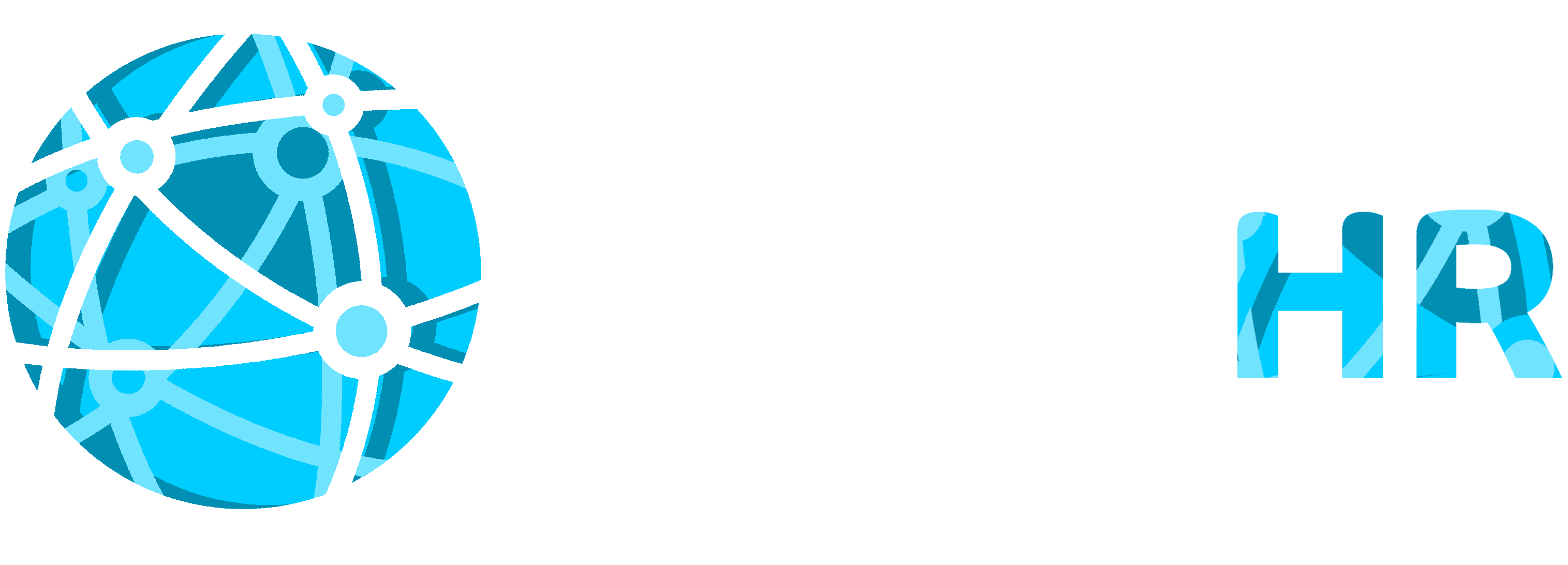Keep Up To Date
If you find our blog updates useful then consider subscribing to our newsletter for regular updates on UK Employment Law


Cookies
We require the use of cookies on our site to gather certain data to help us build our content. We also use cookies to assist in your user experience with some key functions and features of our system.
Our Policy
RETURNING TO THE OFFICE WITH A HYBRID TEAM?

HERE ARE 5 THINGS YOU DON'T WANT TO GET WRONG
- 1. Create a Hybrid Working Policy
- 2. Make sure you're treating employees fairly
- 3. Rethink how you manage performance
- 4. Focus on team happiness
- 5. Make sure you're tech-ready
It goes without saying that the pandemic has created the greatest workplace transformation of our lifetime, quickly changing the way you and your team work. And possibly forever. We know it has its challenges but there are huge benefits long term and once you get the right formula it brings incredible performance from your team and increases outputs exponentially for the organisation.
Within a week, businesses like yours had to quickly adapt to working remotely. It was crazy, stressful and, honestly, a little bit scary. But on the whole, it’s likely that you and your team did an amazing job; quickly adjusting to working from home with surprisingly positive results.
Now there seems to be light at the end of the tunnel. The world is slowly returning to some kind of 'normal', which means you can go back to working in the office like you did pre-covid. Right? Maybe not.
You’re probably reading this because your business is considering, or has decided, to maintain that element of increased flexibility, by giving your employees the choice to continue working from home, in the office, or a mixture of both and so creating a new type of hybrid workforce.
The benefits of a hybrid workforce can be huge. But, of course, it can also have downsides that you need to both be aware of and manage. That’s why we’ve created this guide to help you. Inside, you’ll discover five of the most important things to consider and get right. Let’s get started.
1. CREATE A HYBRID WORKING POLICY
With any sort of change in the business, there are always lots of unanswered questions. This can easily lead to confusion or conflict with your team, which no one wants.
You really need to think about all possible scenarios and create a formal hybrid working policy or atleast add it to your Home Working policy, if you have one, that becomes the new working blueprint for your business.
Think about how you’ll manage requests for flexible working; how you’ll ensure the office is manned (if it needs to be); how many hours a week or month each employee will need to spend in the office (if any), and how this will be communicated back to you, so you know what’s going on and where your team will be.
You need to consider all of this, as well as additional costs, like HMRC rules, expense claims, plus more, before you go ahead with a new policy so that everyone will know where they stand.
This is all about setting expectations to help protect you, your company, your relationship with your employees and your employee happiness.
2. MAKE SURE YOU’RE TREATING EMPLOYEES FAIRLY
With many of us already experiencing some form of remote working, you may have noticed how easy it can be to assume everything’s going well, when behind the scenes someone isn’t happy.
First and foremost, you must ensure that everyone in your business knows that, just as it would be in the office, communication channels to you and/or line managers are always open. You may even want to have an emoji you use on instant messaging that means, could I have a quick word.
Remember when colleagues would just have a chat grabbing a coffee or collar you in the corridor?
Make sure that people know the best ways to voice concerns or complaints, where to go to ask questions and who to speak to should they have any problems.
When your people are frequently working remotely, it can make it more difficult to have a tricky conversation or speak to the right person when something isn’t as it should be. By outlining clear instructions for such an event, you should make it easier for them. And, if you find that some employees are quieter than usual, make the time to check in on them just to be sure.
Make it clear to everyone that, although they may be working away from the office, they are still very much in your mind. They will be considered for all of the usual things, such as projects, promotions, or additional roles as they would normally be.
3. RETHINK HOW YOU MANAGE PERFORMANCE
If you’re not seeing all of your team every day, it can make performance review and management a little more difficult.
However, when working from home became the norm last year, technology stepped up its game and gave us all the tools we could ever ask for to help us stay connected and collaborate. Make sure you are using technology to your advantage i.e. discussion boards, project planning, murals. Working in this way is fun, increases creativity, enhances innovative thinking and problem solving ability.
If you haven’t got software in place to help manage your team’s performance and activity, there are lots of tools out there to help you.
But instead of measuring ‘time’ spent in the office, you may want to reconsider the metrics you’re using to measure employee performance.
You may want to track the following instead:
- 1. Business outcomes
- 2. Employee behaviours
- 3. Important activities
By tracking these metrics instead, it’s less about being stuck to your chair from 9 till 5 and more about outputs to achieve greater performance - regardless of how much time is invested. This is both the essence and benefit of hybrid working.
Encourage time blocking and 'down time' to provide time to think and digest information or prioritise work. Get rid of the notion that we can continually multi-task, this only leads to overwhelm, and believe us this is much harder to stop than it is to prevent in the first place!
As a side note, make sure that all of your managers know exactly what the measures of success you’re looking for are, and what success looks like to you. This could be anything from attracting new clients, to ensuring that everyone is taking regular breaks and clocking off when they should.
Again, you should be able to find the right apps or software to help you measure performance easily and accurately. Good HR software may be a good solution to keep everything in one place.
4. FOCUS ON TEAM HAPPINESS
Just because people are working away from the office, don’t forget to do the things you would do if they were in the office. It’s not ‘out of sight, out of mind’.
Check in with your team regularly but make the conversation all about them, working on a 70/30 split - with you listening at least 70% of the time. Be aware that you 'set the weather' so keep the energy high and your team will mirror the positive behaviour you display.
It’s worth remembering that while some people flourish when working on their own, others get on better when they have more contact with colleagues. It can be very easy to start feeling isolated when working from home so take the time to know your teams 'social styles'.
While most people can recognise which environments make them happiest, sometimes it might be down to you to identify an issue. Speaking with everyone regularly can help you to do that. Make sure you have your 'sensory acuity' turned up to max.
Schedule team meetings via Teams or Zoom at the start or end of each day, avoiding the middle of the day, for just 15 minutes and remember to maintain 1-2-1 meetings too. It’s not always easy to see what’s going on with individuals when there are lots of people involved in a conversation. If something falls out of the team meeting that is specifically involved, then take it off line and if there are any learnings or insights share it with the team as a 2 minute summary at the next meeting.
This will allow others to get on with their work and stop any frustrations from those not involved.
Ensure that training and development continues and isn’t sidelined for those who don’t work in the office all of the time. You'll need to deliver these in a hybrid way that suits everyone. It’s really important that CPD targets and goals are still in place and that individuals are able to keep working towards these, as well as progress their career.
If you have any wellness or mental health initiatives, carry on with them and make sure they are effective. The same goes for teambuilding, which can sometimes feel like 'forced fun' so think creatively about what this actually is and the outcome you are trying to achieve. In fact, these things are even more important while your team is split. It gives them a chance to bond, build trust and get to know how they can help and work more closely together, keeping everyone feeling more motivated and engaged.
Along those same lines, it is really important to ensure that people are taking breaks and making the appropriate time for lunch while they’re working remotely. Encourage 'time out' in the diary, and the use of techniques such as Pomodoro for big pieces of work. Also have a look at some useful apps like Wakeout to regulate time at the screen.
Contrary to popular belief, people who work from home actually end up putting in more hours than they would in the office and find it harder to switch off from work when it’s time to shut down.
And, although travel is still restricted, holiday entitlements are still in place. Encourage everyone to use their entitlement and make sure that, even if they’re holidaying at home, they switch off entirely from work and use the break to relax and re-energise.
Look for signs of Covid-burnout in all your people and follow the above steps to help prevent it.
5. MAKE SURE YOU’RE TECH-READY
While we’re not unfamiliar with a working from home set up these days, it is important that everyone is using the right equipment and tools to get the job done efficiently and safely.
Check that your IT infrastructure is up to the job of handling people who are switching from remote to office working regularly. This will include VPN access and good cyber security measures (another side effect of the pandemic has been a surge in cybercrime and, when you have people working from different locations using different devices, you’re at a higher risk of attack).
Re-assess the tools you’re using to stay in touch and collaborate on projects. Could things be made easier? If you were using a makeshift solution, now is the time to invest in something long-term.
Look for tools that will allow your team to easily stay in touch by email, message, video calls, etc., to share and edit files and to work together a lot more easily. There are lots of solutions out there and your IT department or provider will be able to recommend the most suitable one for you.
Most of all make sure your team have stable and suitable internet provision. There's nothing more frustrating than people disconnecting when you're trying to have a productive meeting or development session.
FINAL THOUGHTS
There’s a lot to consider when it comes to creating a permanent hybrid team; however, if you follow the correct steps and take the time to plan the change correctly, it could be a great way to get the most from your team, build engagement and develop high performance.
If you would like any further advice or guidance on creating your own hybrid team, or the policies that should accompany it, we’d love to help. Simply give us a call or drop us an email to arrange a conversation.